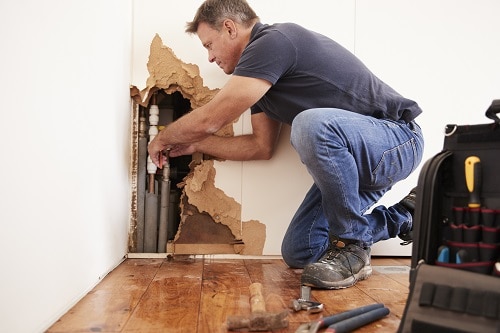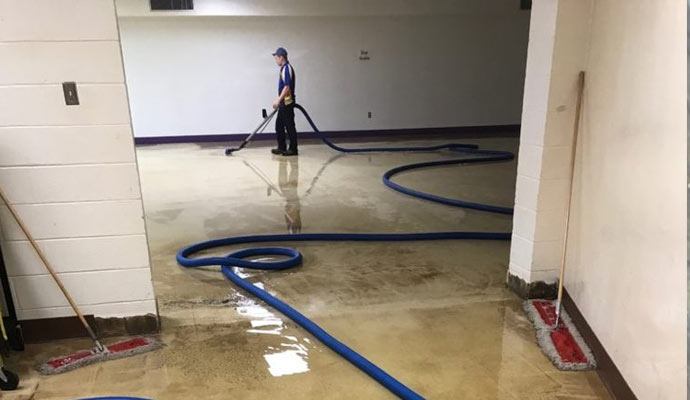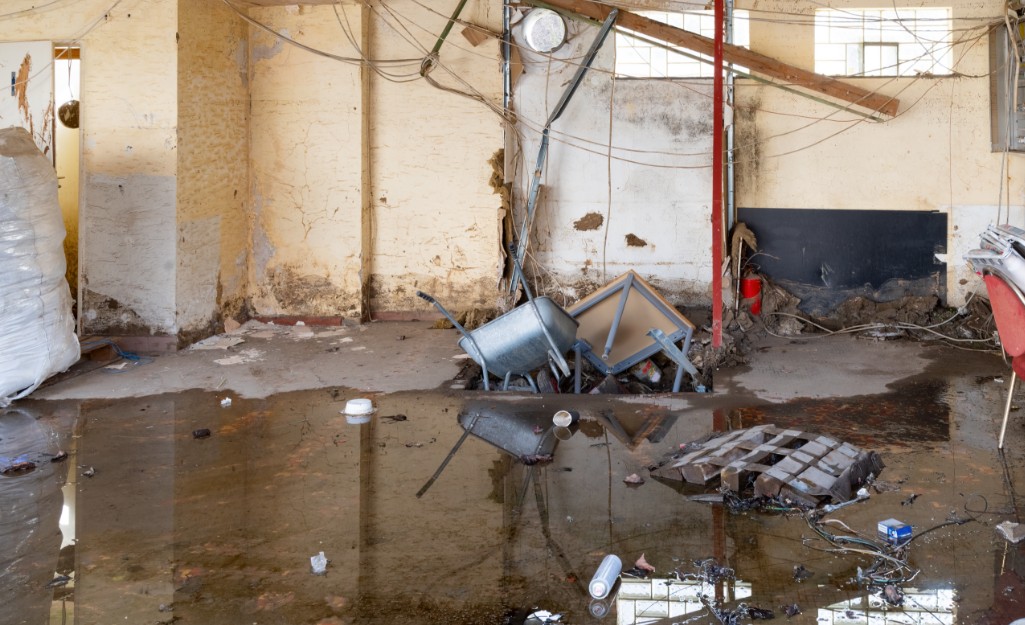Why Water Damage Restoration critical when water strikes?
Wiki Article
Water Damage Restoration 101: Comprehending the Process and Cost
Water damage can strike all of a sudden, leaving home owners in a state of confusion. Understanding the reconstruction procedure is essential for effective recuperation. From assessing the damage to picking the best solution company, each action affects the general end result and expense. Factors such as the kind of water damage and urgency additionally play a considerable role. What are the particular strategies used in repair, and just how can one prepare for potential expenditures?Sorts Of Water Damage

Preliminary Assessment and Inspection

Water Removal Methods
Adhering to the initial analysis, effective water removal techniques are used to reduce damage and prevent more concerns. These techniques entail making use of specialized tools such as industrial-grade vacuum cleaners and submersible pumps - Water Damage Restoration. The option of technique depends upon the volume of water existing and the kind of materials affected. For standing water, submersible pumps are generally used for fast elimination, while vacuum cleaners are suitable for extracting water from carpets and furniture. In addition, progressed techniques like water removal floor coverings may be employed for hard-to-reach locations - Flood Cleanup Services. The goal is to get rid of as much water as possible, minimizing the capacity for mold development and structural damage. Motivate and reliable water extraction is essential in the general water damage remediation procedureDrying Out and Dehumidification Process
As soon as the water removal is full, the drying out and dehumidification process becomes essential to recovering the affected area. This stage generally uses industrial-grade dehumidifiers and air movers to properly decrease moisture degrees. The dehumidifiers attract in damp air, eliminating excess humidity, while air movers circulate air to speed up dissipation. Monitoring devices is usually utilized to track humidity and temperature level degrees, guaranteeing perfect drying out problems. The period of this process can differ relying on the level of the water damage and ecological variables. It is important to extensively dry all influenced products, consisting of wall surfaces, flooring, and furnishings, to avoid mold development and architectural damage. Proper execution of this step is important for a successful restoration outcome.Cleansing and Disinfecting Afflicted Areas
When the drying out procedure is complete, a detailed preliminary assessment and examination of influenced areas is vital to determine contamination levels. Reliable cleaning strategies and ideal products have to then be used to get rid of particles and stains. Sanitization and sanitation methods are vital to assure that damaging virus are eliminated, bring back the area to a risk-free condition.Preliminary Evaluation and Inspection
Before beginning any kind of repair efforts, an extensive initial assessment and inspection of the influenced locations are important for effective cleaning and disinfecting. This procedure involves recognizing the degree of water damage, determining the resource of the water invasion, and evaluating the products affected. Examiners generally try to find indications of mold and mildew growth, structural stability problems, and harmed possessions. The analysis additionally consists of checking moisture levels making use of specialized devices to ensure no hidden water pockets continue to be, as these can lead to additional difficulties. Documenting the findings is necessary for planning the following actions in the repair process. A comprehensive preliminary analysis enables repair specialists to devise a targeted method for reliable cleansing and sanitizing, eventually decreasing damage and health risks.Cleaning Methods and Products
Efficient cleansing and sanitizing of water-damaged areas need a range of items and strategies tailored to the specific products impacted. For porous surface areas like drywall and carpeting, removal techniques are necessary to eliminate excess wetness, adhered to by deep cleansing with specialized cleaning agents. Non-porous products such as tile or steel can be cleansed utilizing commercial-grade cleansers that properly eliminate contaminants. Steam cleaning is one more reliable strategy, especially for rugs and upholstery, as it uses heats to get rid of bacteria and mold (Water Damage Restoration). Additionally, environmentally friendly products are increasingly popular for their safety and security and efficiency - Mold Remediation After Water Damage. Inevitably, picking the suitable cleansing techniques and items not just ensures immediate sanitation but also help in avoiding further damage and wellness risks connected with water invasionSanitization and Disinfection Approaches
When attending to water damage, correct sanitization and disinfection approaches are vital to assure the safety and security and health and wellness of the afflicted environment. After initial cleansing, surface areas must be treated with proper disinfectants to eliminate virus, mold and mildew, and bacteria that prosper in moist problems. Typical approaches include the usage of EPA-approved chemical disinfectants, click over here now which can be applied via splashing or cleaning strategies. In addition, ultraviolet (UV) light systems can successfully sanitize locations by counteracting bacteria without extreme chemicals. The choice of technique often relies on the kind of products impacted and the degree of contamination. Inevitably, thorough sanitization not only restores a risk-free space however additionally aids prevent future health and wellness threats associated with sticking around moisture and mold development.
Repair Work and Restoration Options
Assessing the damage triggered by water direct exposure is vital for figuring out the appropriate repair work and repair alternatives. Property owners might deal with different problems, consisting of harmed drywall, deformed floor covering, and endangered architectural elements. Depending on the degree of the damage, fixings might entail changing areas of drywall, setting up brand-new flooring, or strengthening architectural beam of lights. In situations of severe damage, complete substitute of afflicted materials could be essential. Additionally, specialist conservators often recommend making use of dampness meters to assess hidden dampness levels before determining on the best course of activity. It is vital to act without delay to avoid mold and mildew development and additional wear and tear. Choosing the best alternatives not just brings back the building yet additionally ensures long-term safety and security and performance.Elements Influencing Restoration Costs

The degree of water damage straight influences the restoration costs house owners can expect to sustain. Factors such as the source of the water, the duration of direct exposure, and the damaged materials significantly influence prices. As an example, clean water damage from a damaged pipeline is generally less pricey to restore compared to damage brought on by sewage. Additionally, the degree of contamination determines the demand for specialized cleaning and disposal solutions, further enhancing costs. Geographical area also contributes, as regional labor prices and availability of repair solutions can differ. Lastly, the seriousness of the reaction impacts costs; quicker interventions usually cause reduce general expenses by avoiding further damage. Comprehending these factors is vital for home owners when approximating remediation costs.
The 3 key kinds of water damage are classified based on contamination degrees: clean water, gray water, and black water. A detailed first analysis and assessment are crucial steps in the water damage remediation process. For standing water, submersible pumps are generally utilized for quick elimination, while vacuums are optimal for extracting water from carpetings and furniture. The degree of water damage directly impacts the reconstruction costs property owners can anticipate to sustain. Clean water damage from a damaged pipe is usually less costly to bring back compared to damage created by sewage.
Report this wiki page